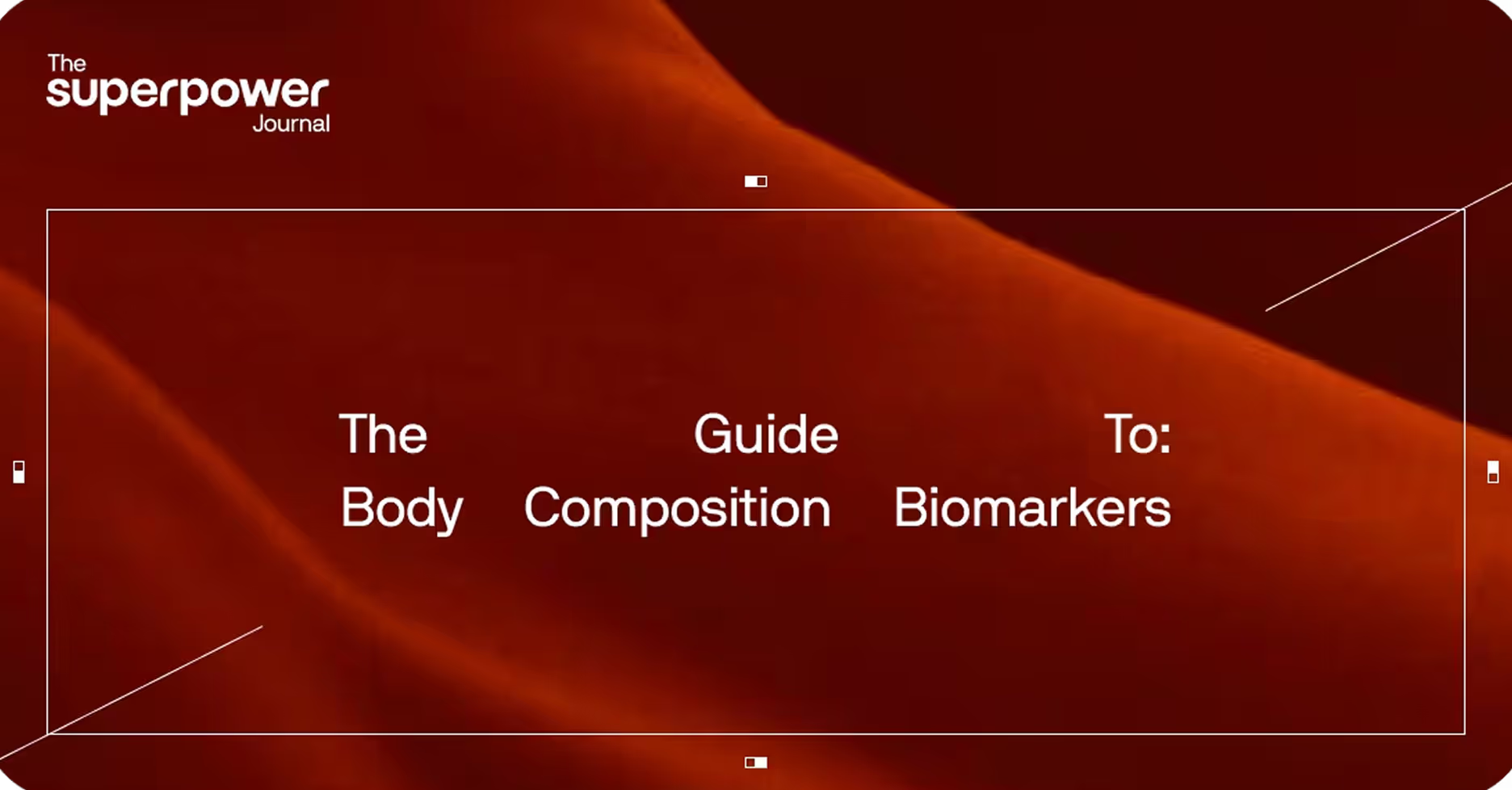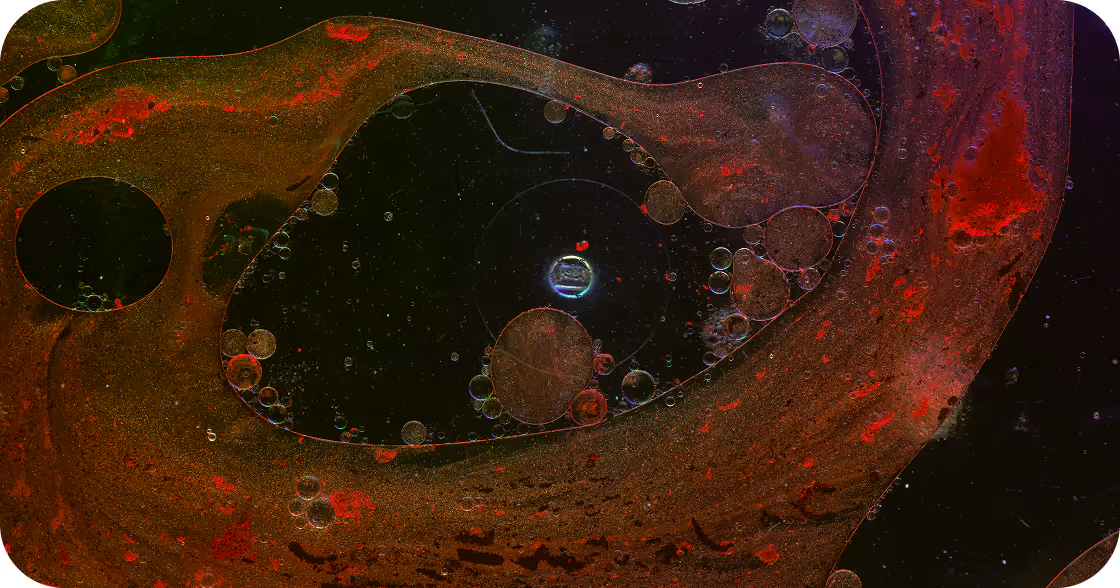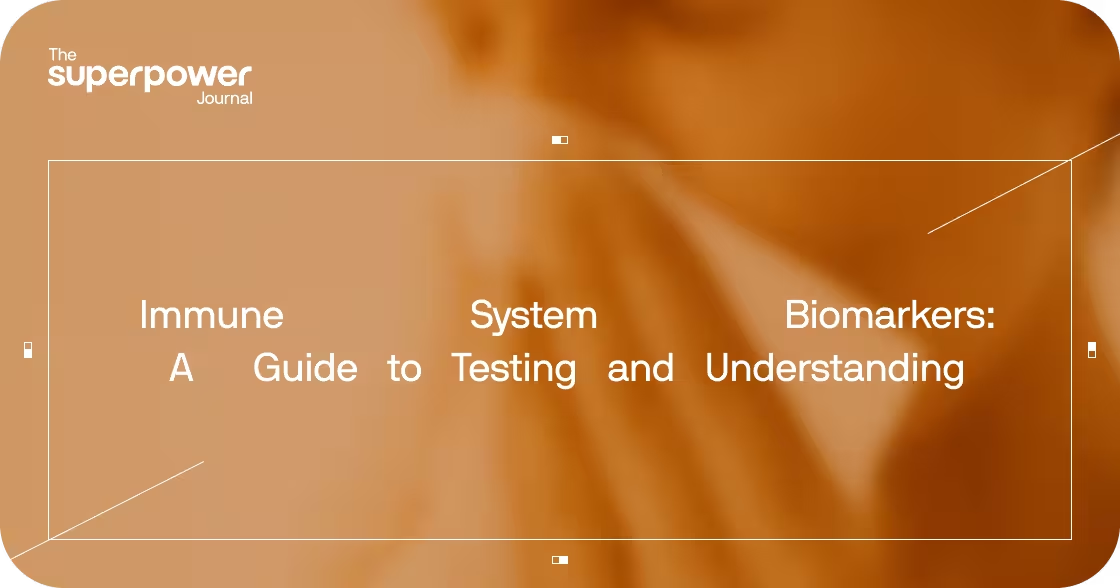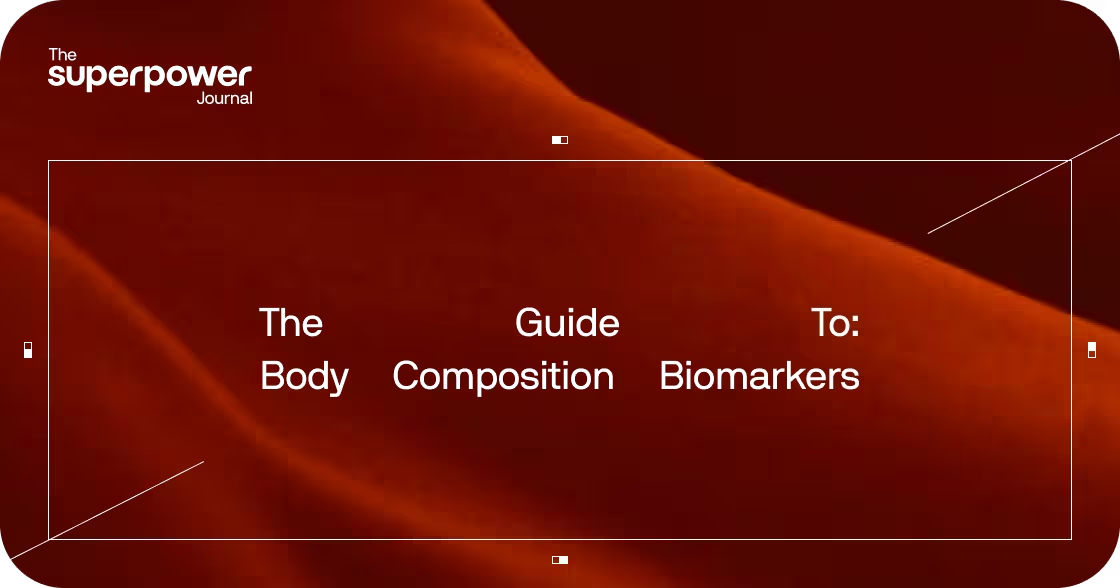Energy dysfunction is reshaping modern health
Fatigue is among the most common symptoms reported in primary care, and it affects quality of life across populations¹. Fatigue is not simply a feeling of being tired — it often reflects underlying biological disruptions in how the body produces and uses energy. Impairments in mitochondrial activity, glucose regulation, thyroid signaling, oxygen delivery, or systemic inflammation can all manifest as low energy, and they also link to long‑term risks including metabolic disease, cardiovascular dysfunction, and accelerated cellular aging² ³.
Energy biomarkers provide measurable signals about these processes. By quantifying molecules related to mitochondrial metabolism, hormones, oxygen transport, and redox balance, clinicians can assess whether the body’s cellular power systems are functioning optimally or under strain⁴.
Energy production is a whole‑body system
Cellular energy is generated primarily through adenosine triphosphate (ATP), the universal energy currency. ATP is produced via oxidative phosphorylation in mitochondria, but this process relies on coordinated action across multiple systems:
- Mitochondria carry out oxidative phosphorylation to generate ATP.
- Thyroid hormones regulate mitochondrial activity and basal metabolic rate⁵.
- Glucose and insulin homeostasis determine whether fuel is efficiently delivered to cells⁶.
- Hemoglobin and oxygen transport ensure aerobic metabolism can proceed⁷.
- Nutrients such as B vitamins, magnesium, iron, and coenzyme Q10 act as cofactors for mitochondrial enzymes⁸.
- Redox balance (oxidative stress vs antioxidant defense) affects mitochondrial efficiency and cell survival⁹.
If any component deteriorates, ATP output falls, leading to symptoms ranging from fatigue to impaired exercise tolerance and vulnerability to chronic disease.
What are energy biomarkers?
Energy biomarkers are measurable physiological indicators, usually in blood but sometimes in urine or tissue, that reflect how effectively the body produces and uses ATP. Some provide direct snapshots of energy metabolism, such as lactate, while others reflect broader regulatory systems like thyroid hormones or glucose control.
In clinical and research settings, commonly evaluated categories include¹⁰:
- Mitochondrial function markers: lactate, pyruvate, NAD+/NADH ratio, coenzyme Q10.
- Glucose and insulin regulation: fasting glucose, HbA1c, fasting insulin, HOMA‑IR.
- Thyroid hormones: TSH, free T4, free T3.
- Oxygen transport and iron status: hemoglobin, hematocrit, ferritin, transferrin saturation.
- Inflammation and oxidative stress: high‑sensitivity C‑reactive protein (hs‑CRP), markers of antioxidant capacity such as glutathione.
Key energy biomarkers explained
Mitochondrial function
- Lactate: Elevated lactate occurs when cells rely more on anaerobic glycolysis due to limited mitochondrial oxidative capacity or reduced oxygen supply¹¹.
- Pyruvate and lactate-to-pyruvate ratio: Abnormal ratios can indicate mitochondrial enzyme deficiencies¹².
- NAD+/NADH ratio: A marker of cellular redox state; lower ratios are associated with aging and metabolic dysfunction¹³.
- Coenzyme Q10: An essential mitochondrial electron carrier; low levels impair oxidative phosphorylation and have been associated with heart failure and fatigue syndromes¹⁴.
Glucose and insulin regulation
- Fasting glucose: A primary measure of baseline glycemic control. Elevated glucose contributes to oxidative stress and endothelial dysfunction¹⁵.
- HbA1c: Reflects average glucose exposure over ~12 weeks. Higher levels correspond to increased glycation and risk of vascular aging¹⁶.
- Fasting insulin and HOMA‑IR: Assess insulin resistance, a key driver of metabolic syndrome and reduced cellular energy efficiency¹⁷.
Thyroid hormones
- TSH: Signals the thyroid to release thyroxine. Elevated TSH often reflects hypothyroidism¹⁸.
- Free T4: The major secreted thyroid hormone, converted into T3 in peripheral tissues.
- Free T3: The bioactive hormone that directly stimulates mitochondrial oxygen consumption and ATP generation¹⁹.
- (Note: reverse T3 is sometimes measured in research, but consensus guidelines do not recommend it for routine testing²⁰.)
Oxygen transport and iron status
- Hemoglobin: The oxygen‑binding protein of red blood cells; reduced levels (anemia) limit aerobic ATP production²¹.
- Hematocrit: The fraction of blood composed of red cells, reflecting oxygen‑carrying capacity.
- Ferritin & transferrin saturation: Reflect iron stores and iron availability. Iron is essential for hemoglobin and electron transport chain function²².
Inflammation and oxidative stress
- High-sensitivity C-reactive protein: A sensitive systemic inflammation marker; elevated CRP is associated with cardiovascular and metabolic disease²³.
- Glutathione: The body’s central antioxidant system; low levels weaken defenses against mitochondrial oxidative damage²⁴.
Normal vs optimal: interpreting ranges
Reference ranges define where most of a population falls, but “normal” does not always mean ideal. For energy biomarkers, suboptimal levels within the reference range can still impair performance or signal risk²⁵. For instance:
- Fasting glucose of 99 mg/dL is technically normal, but meta‑analyses show risk of type 2 diabetes begins to rise above 90 mg/dL²⁶.
- TSH within the high‑normal range may still correlate with symptoms of metabolic slowdown in some individuals¹⁸.
Clinical interpretation increasingly emphasizes “functional ranges” — zones where energy metabolism is most efficient rather than merely not pathological.
Energy biomarkers and aging
Energy biomarkers overlap directly with hallmarks of aging²⁷:
- Mitochondrial decline reduces ATP output and contributes to sarcopenia.
- NAD+ depletion impairs DNA repair and accelerates mitochondrial dysfunction¹³.
- Insulin resistance disrupts autophagy, impairing cellular repair mechanisms¹⁷.
- Chronic inflammation (“inflammaging”) accelerates telomere shortening and oxidative injury²³.
- Advanced glycation (high HbA1c) stiffens proteins and damages blood vessels¹⁶.
Monitoring these biomarkers provides insight into biological age as well as disease risk.
How to optimize energy biomarkers
Nutrition
- Glucose regulation: Limiting frequent glucose spikes reduces oxidative stress and glycation¹⁵ ¹⁶.
- Micronutrients: B‑vitamins, magnesium, and iron act as essential cofactors for mitochondrial metabolism⁸ ²².
- Polyphenols: Compounds in fruits, tea, and olive oil improve redox signaling and support mitochondrial biogenesis²⁸.
Physical activity
- Exercise increases glucose uptake in skeletal muscle independent of insulin, improving glycemic control²⁹.
- Endurance training promotes mitochondrial biogenesis and oxidative capacity³⁰.
Sleep and circadian rhythm
- Adequate sleep supports mitochondrial recovery and regulates hormonal rhythms, including cortisol and thyroid hormones³¹.
Stress and resilience
- Chronic psychological stress is linked with increased inflammation and dysregulation of endocrine energy pathways³².
- Stress‑management practices reduce hs‑CRP and oxidative stress in meta‑analyses³³.
Why comprehensive biomarker testing matters
Fatigue has many potential origins. Anemia, hypothyroidism, insulin resistance, mitochondrial inefficiency, or systemic inflammation can each produce similar symptoms. Without objective testing, pinpointing the cause is difficult.
Testing is particularly valuable for:
- People with unexplained chronic fatigue¹.
- Populations at metabolic risk (family history of diabetes or cardiovascular disease).
- Adults with suspected thyroid or iron disorders.
- Older adults, in whom anemia, inflammation, and mitochondrial decline often co‑occur³⁴.
- Athletes aiming to optimize energy efficiency and recovery.
Panel‑based assessments that group mitochondrial, thyroid, metabolic, and inflammatory markers provide a fuller picture of biological energy networks compared with testing a single marker in isolation¹⁰.
Building a healthier future with biomarker testing
Personalized medicine is increasingly guided by biomarker evaluation. For energy health, this means moving beyond symptom‑based management to system‑wide understanding of how the body produces, transports, and uses energy. By integrating biomarker testing into preventative care, individuals and clinicians gain earlier insight into metabolic risk, cardiovascular resilience, and cellular vitality.
Ready to test your biomarkers? Join Superpower today to access advanced biomarker testing with over 100 lab tests.
- Finsterer J, Mahjoub SZ. Fatigue in healthy and diseased individuals. Pharmacology. 2014;93(3-4):172–177.
- Chacko BK, Kramer PA, et al. The bioenergetic health index: a new concept in mitochondrial translational research. Clin Sci (Lond). 2014.
- Picard M, Wallace DC, Burelle Y. The rise of mitochondria in medicine. Mitochondrion. 2016;30:105–116.
- Johnson ML, Robinson MM, Nair KS. Skeletal muscle aging and the mitochondrion. Trends Endocrinol Metab. 2013.
- Mullur R, Liu YY, Brent GA. Thyroid hormone regulation of metabolism. Physiol Rev. 2014;94(2):355–382.
- DeFronzo RA. Insulin resistance, lipotoxicity, type 2 diabetes and atherosclerosis. Diabetes Care. 2010.
- Schmidt W, Prommer N. Impact of alterations in total hemoglobin mass on VO2max. Exerc Sport Sci Rev. 2010.
- Balaban RS, Nemoto S, Finkel T. Mitochondria, oxidants, and aging. Cell. 2005.
- Sena LA, Chandel NS. Physiological roles of mitochondrial reactive oxygen species. Mol Cell. 2012.
- Wallace DC, Fan W. Energetics, epigenetics, mitochondrial genetics. Cell Metab. 2010.
- Robergs RA, Ghiasvand F, Parker D. Biochemistry of exercise-induced metabolic acidosis. Am J Physiol Regul Integr Comp Physiol. 2004.
- Rossignol R, Malgat M, Mazat JP, Letellier T. Threshold effect and tissue specificity. Biochem J. 1999.
- Yoshino J, Baur JA, Imai SI. NAD+ intermediates: the biology of nicotinamide riboside. Cell Metab. 2018.
- Hernández‑Camacho JD, Bernier M, López‑Lluch G, Navas P. Coenzyme Q10 supplementation in aging and disease. Front Physiol. 2018.
- Ceriello A, Testa R. Antioxidant anti‑inflammatory treatment in type 2 diabetes. Diabetes Care. 2009.
- Selvin E, et al. Glycated hemoglobin and the risk of diabetes and cardiovascular disease. NEJM. 2010.
- Shulman GI. Ectopic fat in insulin resistance, dyslipidemia, and cardiometabolic disease. NEJM. 2014.
- Biondi B, Cooper DS. The clinical significance of subclinical thyroid dysfunction. Endocr Rev. 2008.
- Yen PM. Physiological and molecular basis of thyroid hormone action. Physiol Rev. 2001.
- American Thyroid Association. Guidelines on thyroid function testing. 2012.
- Ganz T, Nemeth E. Iron homeostasis in host defence and inflammation. Nat Rev Immunol. 2015.
- Beard JL, Connor JR. Iron status and neural functioning. Annu Rev Nutr. 2003.
- Ridker PM. C‑reactive protein and the prediction of cardiovascular events. Circulation. 2003.
- Wu G, Fang YZ, Yang S, Lupton JR, Turner ND. Glutathione metabolism and its implications for health. J Nutr. 2004.
- Strachan MWJ, Reynolds RM, Marioni RE, Price JF. Cognitive function, dementia and type 2 diabetes mellitus. Endocr Rev. 2011.
- Huang Y, Cai X, et al. Fasting glucose and risk of type 2 diabetes: a systematic review. Diabetes Care. 2016.
- López‑Otín C, Blasco MA, Partridge L, Serrano M, Kroemer G. The hallmarks of aging. Cell. 2013.
- Lu J, Holmgren A. The thioredoxin antioxidant system. Free Radic Biol Med. 2014.
- Bird SR, Hawley JA. Exercise and type 2 diabetes: evidence from meta‑analyses. Eur J Sport Sci. 2017.
- Hood DA, Memme JM, Oliveira AN, Triolo M. Maintenance of skeletal muscle mitochondria in health, exercise, and aging. Annu Rev Physiol. 2019.
- Reddy AB, O’Neill JS. Healthy clocks, healthy body, healthy mind. Trends Cell Biol. 2010.
- Chrousos GP. Stress and disorders of the stress system. Nat Rev Endocrinol. 2009.
- Pascoe MC, Thompson DR, Ski CF. Yoga, mindfulness-based stress reduction and stress-related physiological measures: A meta-analysis. Psychoneuroendocrinology. 2017.
- Wouters H, et al. Association of anemia with health-related quality of life in older persons. J Am Geriatr Soc. 2016.




.avif)
.png)






.svg)


